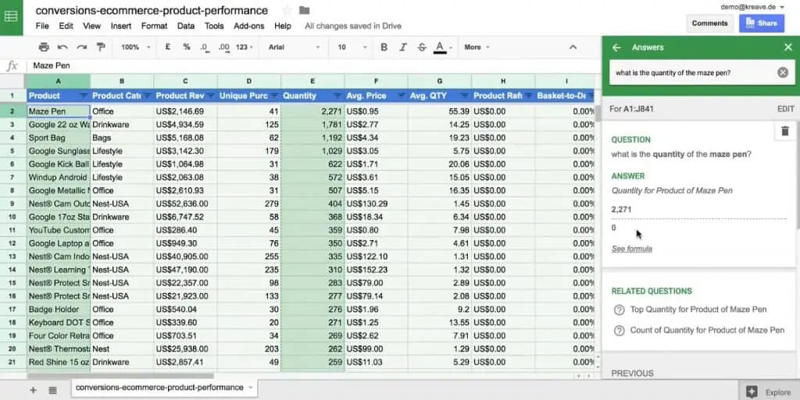Connecting Google Sheets to WordPress Seamlessly
Google Sheets and WordPress independently serve as highly effective tools. They work together to make systems run faster plus handle information and improve the website's feature set. Microsoft Sheets in WordPress goes beyond standard features because it lets you display dynamic data alongside automated content production and visual elements. This guide teaches you step-by-step how to link Google Sheets to WordPress through different procedures.
Why Integrate Google Sheets with WordPress?

We achieve many advantages by connecting Google Sheets to WordPress.
- Changes to your spreadsheet will update your online site real time.
- Our system takes over human tasks and handles both content generation and update work.
- The system shows your website's latest spreadsheet results directly on its pages.
- Multiple team members can edit Google Sheets directly which then shows results right away on the website.
Methods for Connecting Google Sheets to WordPress
These methods provide the best ways to link Google Sheets with WordPress.
1. Including Google Sheets through an iFrame Link Connection
To embed Google Sheets on WordPress simply copy the iFrame link and insert it for display. Using an iFrame link provides the best way to show live data from Google Sheets without using plugins.
Steps:
Publish the Spreadsheet:
- Open your Google Sheet.
- Navigate to File then select the Publish to the Web command.
- Choose Embed and receive the iFrame code that links your Google Sheets.
- Insert the iFrame link into your WordPress website.
- Begin your work through your WordPress control panel.
- Update the content page that you want to show the data.
- Insert Custom HTML content box for Drupal or copy the iframe embed code into the Text editor for WordPress Classic Editor version.
Adjust Dimensions (Optional):
Change the width and height numbers in the iFrame code section to improve how the sheet appears.
The method lets your changes to the spreadsheet be instantly shown on your site without manual updates.
2. Using Plugins for Seamless Integration
If you want to embed Google Sheets through plugins you can pick EmbedPress or wpDataTables because these tools make the connection process easier.
a) EmbedPress Plugin
EmbedPress helps you embed Google Sheets without requiring an iFrame link.
Steps:
Install EmbedPress:
- Open your WordPress dashboard then choose Plugins followed by Add New.
- Install EmbedPress from the Plugins menu and enable it to use.
Copy the Spreadsheet URL:
Within Google Sheets click File then Publish to the Web followed by copying the publicly accessible link.
Embed in WordPress:
- Open a post/page in WordPress.
- Insert the EmbedPress Block and paste the URL of your document into it.
- Beginners can use this method and select from several embedding options.
b) wpDataTables Plugin
The wpDataTables plugin handles interactive Google Sheets table creation like a professional.
Steps:
Install wpDataTables:
Visit Plugins > Add New and enable a search for wpDataTables while you set up and enable the plugin.
Import Data:
Use wpDataTables tool to integrate your spreadsheet while selecting how to show data in visual format.
Sync Data:
Your site will instantly show updated Google Sheet data through this feature.
3. Pabbly Connect
You can set up automatic WordPress operations through Google Sheets thanks to Pabbly Connect. The system creates WordPress blog posts from every fresh spreadsheet entry.
Steps:
Set Up Pabbly Connect:
Create a new workflow named “Google Sheets to WordPress” after signing up for Pabbly Connect.
Configure Trigger:
Select “Google Sheets” as the trigger application.
Define the system to react on new rows in your spreadsheet by adding its webhook URL to Pabbly Connect.
Link Google Sheets:
Use Pabbly Connect add-on to activate this tool in your Google Sheets portal.
Enter your Pabbly Connect webhook URL to the setup area and turn on event sending.
Configure Action:
Set WordPress as the target program for your action.
You need to activate the Create Post operation followed by matching title and content columns from your spreadsheet to corresponding WordPress fields.
Test Workflow:
Test your changes by adding a fresh line in your spreadsheet and check if the new post displays on your site.
4. Custom Coding with APIs
Advanced users and developers can access total control through the Google Sheets API while coding their own preferences. With this method you can retrieve data from spreadsheets automatically at your website.
Steps:
Enable Google Sheets API:
Log in to the Google Cloud Console to make a fresh project and allow Google Sheets API access.
Generate API Credentials:
You need to get your spreadsheet access credentials either as an API key or through OAuth authentication.
Write Custom Code:
- You can get data from external APIs through your WordPress theme/plugin files by writing PHP or JavaScript code.
- Empower your users to view retrieved data on their website through pre-defined templates or shortcode tools.
- Professional programmers can depend on this solution since it handles intricate data connections.
Common Use Cases

Show true schedules that refresh themselves automatically.
Show data visualizations by displaying charts and graphs based on current spreadsheet data.
The system generates new blog posts using data from the spreadsheet feed.
Staff members can edit spreadsheet data and maintain accurate website content at the same time.
Best Practices for Integration
Protect spreadsheet data from public view in your distribution channel.
If you want specific advanced features you should install the wpDataTables plugin.
Check Pabbly Connect workflows daily to make sure they run properly after software updates.
Conclusion
Integrating Google Sheets with WordPress is a powerful strategy for enhancing website functionality, automating workflows, and streamlining data management. By leveraging tools like Pabbly Connect, EmbedPress, and wpDataTables, users can easily embed live spreadsheets, automate content creation, and sync real-time data updates. Whether you're aiming to improve collaboration, enhance reporting capabilities, or simply display dynamic content, these integrations offer flexible solutions tailored to various needs.
On this page
Why Integrate Google Sheets with WordPress? Methods for Connecting Google Sheets to WordPress 1. Including Google Sheets through an iFrame Link Connection Publish the Spreadsheet: Adjust Dimensions (Optional): 2. Using Plugins for Seamless Integration a) EmbedPress Plugin Install EmbedPress: Copy the Spreadsheet URL: Embed in WordPress: b) wpDataTables Plugin Install wpDataTables: Import Data: Sync Data: 3. Pabbly Connect Set Up Pabbly Connect: Configure Trigger: Link Google Sheets: Configure Action: Test Workflow: 4. Custom Coding with APIs Enable Google Sheets API: Generate API Credentials: Write Custom Code: Common Use Cases Best Practices for Integration ConclusionRelated Articles

10 Must-Have Tools for Effective User Acceptance Testing

Which Are The Best Ways to Automate OneDrive for Effortless File Management

Which Are The 8 Best Database-Powered App Builders for Seamless Development

How to Add Leads to LeadConnector from a Webhook: A Step-by-Step Guide

Speed Up Contact Form Follow-Ups with Automation

Top Chrome Extensions Every Web Developer Should Use

Best Screen Sharing Software for Remote Teams in 2025: A Comprehensive Guide

Convert DOCX to TXT Files in Batches Online with No Downloads

How to Convert MPEG to WAV: A Step-By-Step Guide

The 10 Best Cloud Storage Apps in 2025: Simplify Your Digital Life

Whitelisting Guide: Allow Safe Websites Blocked by Antivirus

 knacksnews
knacksnews